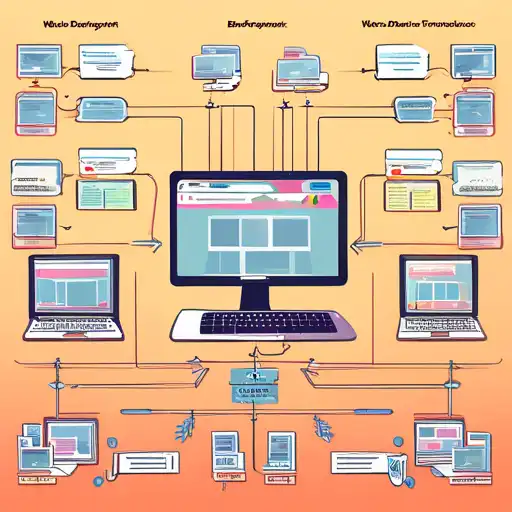Understanding Web Development Frameworks
In the ever-evolving world of web development, choosing the right framework is crucial for building efficient, scalable, and maintainable websites and applications. With a plethora of options available, developers often find themselves at a crossroads, trying to determine which framework best suits their project needs.
What Are Web Development Frameworks?
Web development frameworks are software libraries designed to support the development of web applications by providing a standard way to build and deploy them. They offer a foundation upon which developers can build, saving time and effort by avoiding the need to write code from scratch.
Types of Web Development Frameworks
There are primarily two types of web development frameworks: frontend (or client-side) and backend (or server-side). Frontend frameworks, such as React and Angular, focus on the user interface and experience. Backend frameworks, like Django and Ruby on Rails, handle server-side operations, database interactions, and application logic.
Factors to Consider When Choosing a Framework
Selecting the right framework involves considering several factors to ensure it aligns with your project requirements and team expertise.
Project Requirements
The nature and scope of your project play a significant role in determining the appropriate framework. For instance, a single-page application (SPA) might benefit from a frontend framework like Vue.js, whereas a content-heavy website might require a robust backend framework like Laravel.
Learning Curve
Some frameworks have a steep learning curve, which can impact project timelines. It's essential to assess your team's familiarity with the framework or the time available to learn it.
Community and Support
A strong community and good documentation can significantly ease the development process. Frameworks with active communities, such as React and Django, offer extensive resources, tutorials, and third-party tools.
Performance and Scalability
Performance requirements and scalability prospects are critical considerations. Some frameworks are optimized for high performance and can handle large-scale applications more efficiently than others.
Popular Web Development Frameworks in 2023
Here's a look at some of the most popular web development frameworks this year:
- React: A JavaScript library for building user interfaces, known for its virtual DOM feature.
- Angular: A platform and framework for building single-page client applications using HTML and TypeScript.
- Vue.js: A progressive framework for building user interfaces, designed to be incrementally adoptable.
- Django: A high-level Python web framework that encourages rapid development and clean, pragmatic design.
- Ruby on Rails: A server-side web application framework written in Ruby, emphasizing convention over configuration.
Conclusion
Choosing the right web development framework is a decision that can significantly affect the success of your project. By carefully considering your project requirements, team expertise, and the framework's community and performance, you can make an informed choice that aligns with your goals. Remember, the best framework is the one that fits your project's needs and your team's skills.
